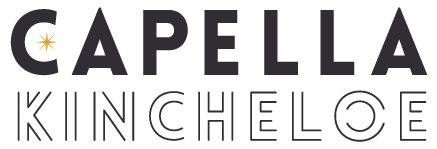Client Presentations: Interior Designer's Guide to Presenting Your Design Plan
Not long after I first started my business, I spoke to a potential client who wanted "three different design schemes presented to them like they do on HGTV". First, HGTV is fake. Second, creating three completely different design schemes is a waste of time and of my talent. A designer's job is to take several different puzzle pieces: the home, budget, the clients & family, client's style, and client's lifestyles and combine those into a beautiful and well-designed home. There are a lot of parameters to consider. Without taking into account any of those puzzle pieces creating different design scheme would be as easy as pie.
So how do you present the design plan to a client?
Depending on the scope of the project, the initial design phase takes me around 2-4 weeks. During this time I am gathering design inspiration and quotes, I am shopping and putting together presentation boards (more on that later). I have very little communication with the client, I let them know that this is a creative process and it takes time to get right.
Before you get to this phase you should have a signed contract and a retainer. You should have extensively talked to the client about their budget, their lifestyle, their style and their desires for the house. You should have measurements and photos. You should have a good stack of data from this research phase to then begin working on the design plan.
When it comes time to meet with the client and present your plan this is what I include.
What I include in client presentations:
1. Design boards
Design boards are the foundation of my design presentation. I find that simple cork boards with pins and paper are the best. By using these materials items can easily be moved around or removed (sofa in den not living, hate the bar stools - gone). I print out each piece of furniture, rug, design feature, lighting, flooring, that has been selected and tack it on the board. I also tack on fabric samples for upholstery and curtains. The design boards are a way to get all the information in one space for overall absorption.
A design board is different from a mood board in that a design board is the actual design of the client's space and the mood board is different inspiration images used to create the feel or general aesthetic for the space.
Other options for design board is to create a digital design board (in Photoshop or Pages for example) with all of your design selections so you can print it out on a single page. This looks great but can be less flexible during the presentation. You can also create this design board and present to your client directly from the computer.
2. Furniture Plan
I also put the CAD drawn furniture plan on the design boards. I always give the clients a copy of the furniture plan to hold while I present the design plan. The furniture plan will have accurate measurements for the furniture that was selected and is being presented. If nothing has been selected for that space yet, I indicate that it is a placeholder.
3. Samples
Samples should always be brought to client presentations. This includes my "hero" samples- the one I selected that I think will work best and perhaps another option or two (kept in my pocket just in case). I tack the fabric samples to the design board next to the printed image of the furniture they go on. But by the end of the meeting oftentimes the samples are off the cork board so the clients can touch and feel the fabric. I also bring any samples of tile, plumbing finishes, metal furniture finishes, paint swatches, wood finishes, that I can get my hands on.
4. Budget
Before you embarked on this project you should have gotten a budget from the clients and then broken that number down per room and the room components. Two column budgets are good, meaning there is a column for what is budgeted and the actual number spent. This helps the client feel like you've got an eye on the bottom line.
5. Renderings
I put renderings last because I don't do them for every project presentation. I've found some of my clients need them and others don't. I outsource my renderings and charge that fee as a reimbursable cost. Usually, from my extensive New Client Packet, I know if this particular project will need a rendering or not and other times I just ask. Unfortunately, because of that pesky HGTV, many clients think we can just whip up a 3D walk-thru in a couple of minutes. Renderings have become more expected during client presentations. It can be a nice insurance against unhappiness down the road because you are showing them exactly what their space will look like when you're finished (if they stick to the plan).
Next Steps:
- Now you know how I present to a client. Take some time to figure out how you want to do it in your business. There is no one "right" way. The right way is what works for you. Create a system around it.
- Check out Kathy Kuo article.
- Take a look at the Client Presentation board for ideas.
- Let me know in the comments below what you want to know about presenting to a client.
Like this article? Share with a fellow designer. #collaborationovercompetition




